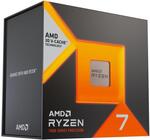Near all time low
ATL Shopping Express deal was $5 cheaper after shipping and surcharge included
Note: Smart Home Store AU = another eBay front from Shopping Express
100-100000910WOF
AMD Ryzen 7 7800X3D (Base: 4.2GHz, Boost: 5.0GHz / 104MB Cache / AM5 / 8 Core / 120 Watt, No Heatsink Fan / Raphael)
3 Year/s Warranty





Pretty much the same price as a 5800X3D :) .. i guess the AM5 motherboard prices (itx i'm looking at you) and DDR5 ram compatibility and training issues are keeping people away